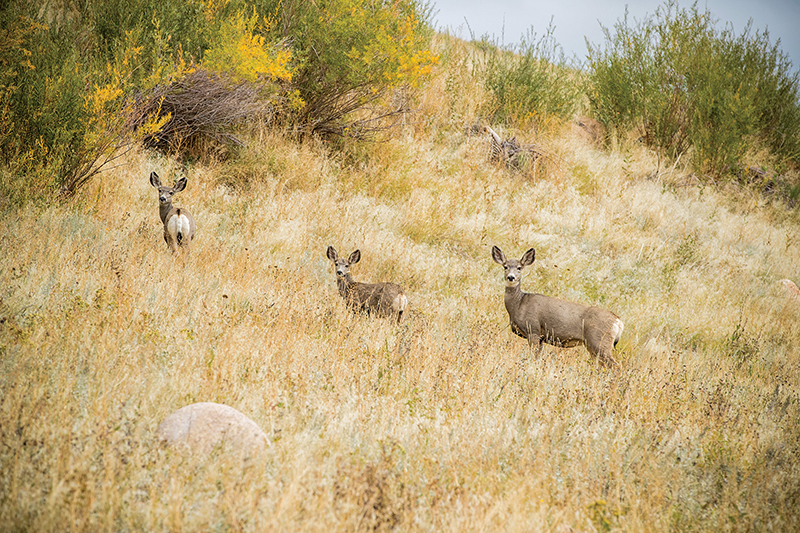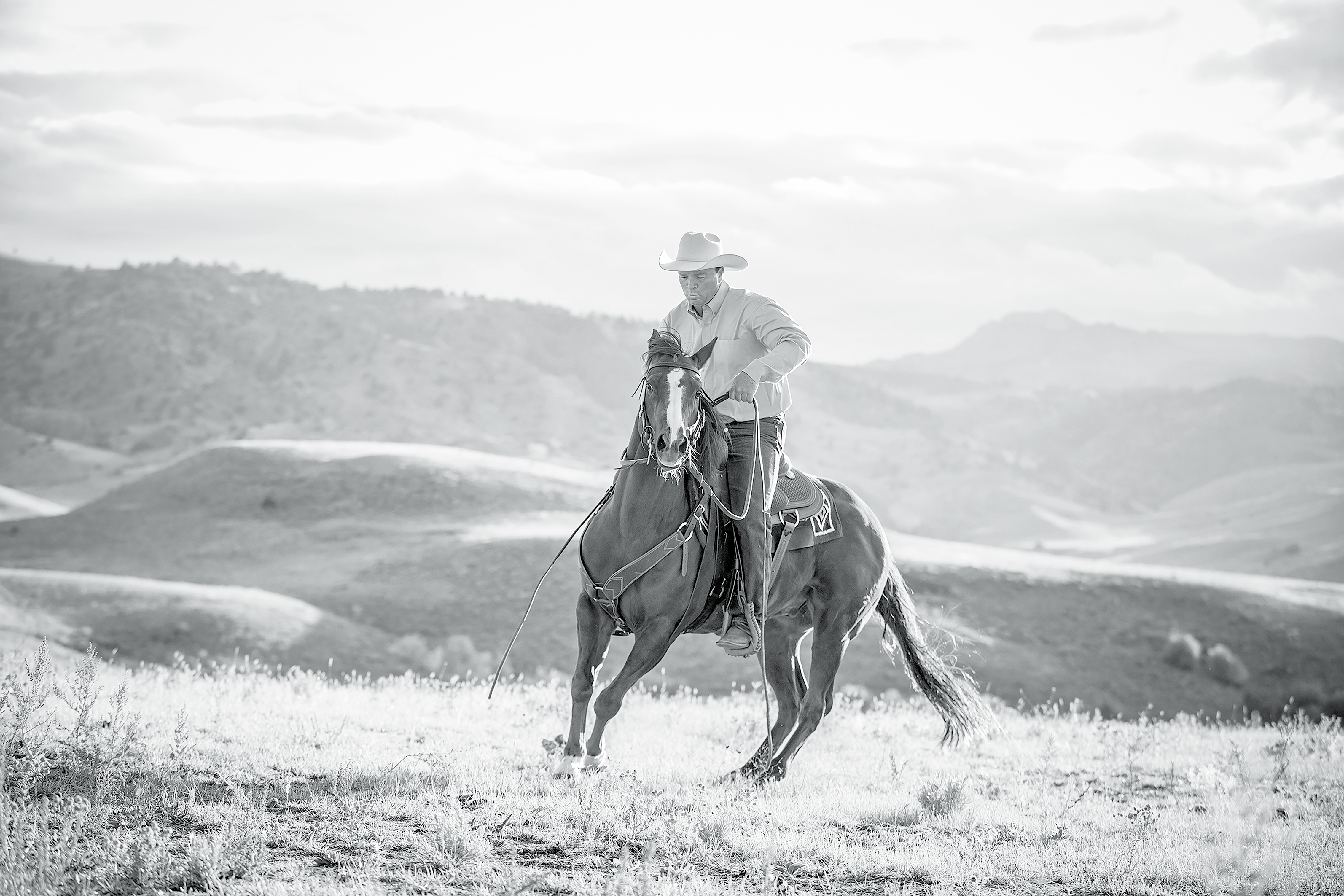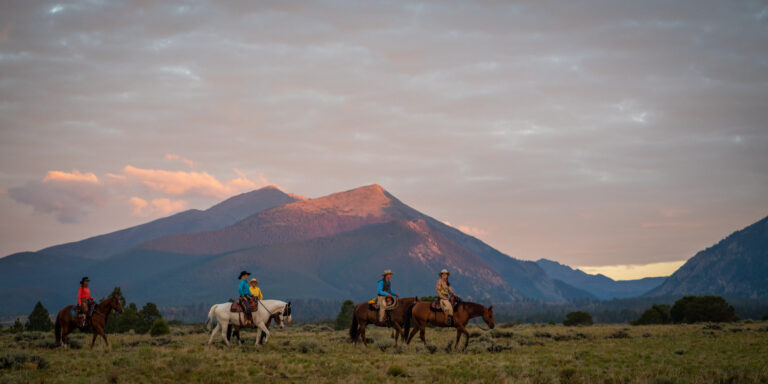When I encounter an amazing trail horse, I know it didn’t happen by accident. For a horse to become bombproof, someone has to put in the time to build his confidence and improve his response to fear to make him confident and brave. If your horse spooks every time he encounters the unexpected, it’s because you haven’t given him the tools to manage his emotions and face his fears. You can change this with practice and better riding awareness.
[READ: Be Aware on the Trail for Safety]

Mallory Beinborn
Here I’ll share five steps to reduce the number of spooks you have on the trail. I’ll start by teaching a more productive response to a spook. Then I’ll offer tips to boost your awareness so you can spot a spook before it happens and techniques to support your horse when, even despite your best efforts, he spooks on a ride.
Step One: Lay the foundation.
To begin, you must change your horse’s muscle memory to respond to fear by facing it rather than turning away. Begin your work when the stakes are still low. Try this exercise on the ground in an unobstructed area where you’re both safe and comfortable, such as a round-pen; arena; or open, hole-free field. From the ground, hold him on a long lead and shake an empty plastic bag tied to the end of a longe whip near him. It’ll make him uncomfortable, and he’ll try to move away. The moment he starts to spook, use the lead to turn him to face his fear, even if only for a second. As soon as this happens, remove the stressor. This teaches him that as soon as he faces his fear, it goes away. When he’s past his fear of the empty bag, move to something more stressful, such as an empty feed sack filled with crushed cans and rocks, for example.
Step Two: Engrain the instinct.
When he’s confident on the ground, move to the saddle. For this you’ll need a friend’s help. Instruct your friend to deliberately spook your horse, but not in an overly predictable way. You can even have her use the empty plastic bag that you started with. From the saddle, your goal is to control your horse’s movement, redirect his nervous energy, and help him face his fears. The easiest way to do this is to disengage his hindquarters.
[READ: Trail Riding Confidence]

Mallory Beinborn
If your friend approaches and spooks your horse from the left, pick up your left rein, circle to the left several times, and then stop facing the object that scared him. Relax, sit, and let him look at it. If he continues to try to bolt, repeat the exercise until he’s able to stand and face his fear, even if only for a second. Disengaging his hindquarters and circling takes away his ability to run. It also gives him a way to express his nervous energy. It’s important that you circle him in the direction of the spook trigger. If you circle away, you let him run from his fears, which only confirms that he’s right to be scared. Be sure that the person who’s helping you understands the drill. She must stop actively trying to spook your horse as soon as he stops to face her.
Step Three: Learn to spot the spook.
Even if you know that you can handle a spook, be aware of your surroundings while riding so that if something comes up you’re not caught completely off guard. The best way to do this is to learn on-the-trail tells. Meaning, learn what your horse spooks at and the events that precede it so that you can look for signs that something’s coming. For example, if you see birds flying from bushes up the trail, it’s likely that there’s wildlife or another rider, pedestrian, or cyclist ahead that could scare your horse.
Step Four: See and feel the signs.
The next preparedness step is to know your horse. His body language will tell you when he’s on high-alert, worried, and ready to run. When you feel and see him start to get scared, you’ll step in to help manage his fear. Every horse has different “tells”—behaviors that give away what he’s thinking. Maybe he puts his head up and cocks it to one side or his body gets tense and his ears will face the direction of the noise or object. If the trigger is ahead of him, his ears will point forward. If it’s behind him, his eyes will focus toward his rear with his ears pointed back to listen.
Step Four: Put it to practice.
Even if you desensitize your horse and practice obstacles at home, it’s still possible to come across something on the trail that’s bigger and scarier or that applies more pressure than your horse feels confident facing. Despite your practice, your horse’s fight-or-flight instinct will surface in these moments. This is when your at-home training comes in. The moment you feel him start to spook, go back to the exercise you practiced at home. Disengage his hindquarters, circle, and face. You’ll divert his attention and he’ll remember what to do.
[READ: Tune Up a Trail-Balker]







